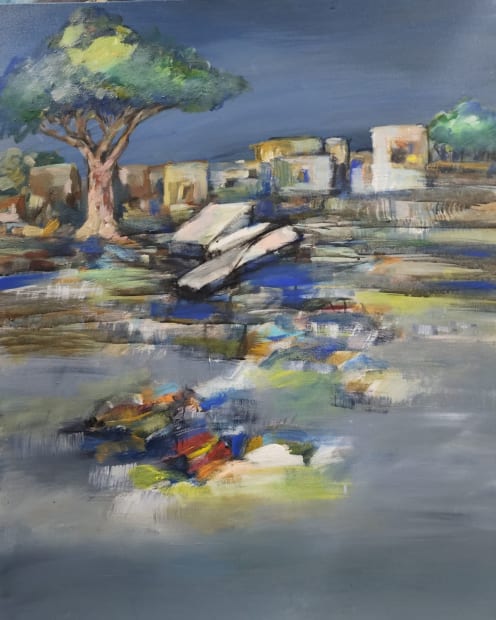-
Coming from one of the first pioneering generations of the UAE’s fine artists, along with contemporaries such as Hassan Sharif and Najat Makki, Abdulrahim Salim’s work both sketches and paints a distinct portrait of the nation’s cultural past, existing in dialogue with myth, folk tales, spirituality, and historical traditions of the Arabian Gulf. Particularly exploring the female form, figuration and abstraction slash together with equal harmony and dissonance in his Untitled Charcoal sketches on paper, for instance. Other charcoal works incorporate shocks of collage – a single scrap of scarlet paper – embedded into the image, such as in Untitled 112 (2019), like a cymbal clang in a song. It’s rather like the air is perennially smudged, as if in an incensed room, in the atmosphere of Salim’s artworks, nowhere more apparent than in his full-color paintings. Here, the scales are tipped further towards abstraction, where clear visuals appear as if slurried through a water tank, with clear figures or objects appearing more like shoals of fish in movement. Deep indigos, noirs, ruby reds, and jewel tones swim in and out of each other. The effect is mystical, resisting a transparent reading of meaning, more focused on capturing the textures and tints – the essence – of the meaning itself.
-

Untitled 31, 2022
Acrylic on Canvas
101.5 x 81.5 cm
-
 Untitled 29, 2022Acrylic on canvas130 x 130 cm
Untitled 29, 2022Acrylic on canvas130 x 130 cm -
 Untitled 18, 2022Acrylic on canvas150 x 150 cm
Untitled 18, 2022Acrylic on canvas150 x 150 cm
Abdulrahim Salim , 15 November 2023 - 15 February 2024



















